We continue our section articles on arbitration padel. The topic of the day: the exchange.
In the exchange, after a rebound on the ground, the ball touches another surface (window, fence…) of the same camp. Decision ?
The point continues.
Note: the door handle, the fences and the walls are an integral part of the terrain.
A ball hit by a player directly touches a window of the opponent's field or a fence before touching the ground. Decision ?
The pair of the player who hit this ball loses the point.
A ball hit by a player touches the net (or its protection) then directly a window or a fence before touching the ground of the opposing court. Decision ?
The pair of the player who hit this ball loses the point.
A ball that was going to directly hit a window is volleyed by a player. Decision ?
The point continues.
On a smash, the ball goes over the side wall, hits a tree branch and then returns good. Decision ?
Point for the pair having made the smash, even if there was not a 2nd rebound on the ground.
A failed spike from A (pair A/B) was going to go out but hits the net post and returns to the side of pair C/D, their opponents. Decision ?
The point continues.
On a smash, the ball hit by A (A/B pair) hits the ground on the opposing side, the back window and then the light post. It is then returned good by C, (pair C/D). Decision ?
Point won by the A/B pair.
During the rally, player B of the A/B pair drops his cap, the referee, supervisor intervenes and replays the point. In the next game, the same player knocks a ball out of his pocket just before he spikes. Their opponents C/D stop the point because they feel embarrassed. Decision ?
Point won by the C/D pair.
In the event that play outside the court is authorized, a ball leaves the court by passing over the back grid. Decision ?
The point ends when the ball exits the lane through the back wall.
A smash from A (pair A/B) hits the ground on the side of the pair C/D, then the back window then returns to the side of A/B. Player C then jumps over the net to play that ball and lands out of bounds, he hasn't touched anything. Decision ?
Point for the A/B pair.
Outdoor play is permitted. A player smashes over the backline, but in his tracks, hits the net after the ball has cleared the backline but before the ball hits the ground. Decision ?
This player's pair wins the point because the ball is out of play as soon as it goes beyond the back wall.
During an exchange, a player of the A/B pair spikes, the ball hits the ground on the opposing side then the back window then the net post and returns to his own court. This player catches the ball with his hand. Decision ?
Point lost by the A/B pair.
Off-court play is permitted. During a rally, Player A (A/B pair) lob out over the side gate. Before the ball touches the ground, and under the action of the wind, the net touches one of the players of the pair C/D who was at the net. Decision ?
Point won by the A/B pair.
Off-court play is permitted. A ball goes over the side wall following a spike, a player of the opposing pair goes out of court, hits the ball directly into the net post or its protection. It lands well in the opposing field. Decision ?
The point continues.
Out of court play is allowed, one player from pair A/B kicks the ball over the side wall and one player from pair C/D plays the ball out of court and kicks the ball from the side of pair A/B directly into the net, the ball then rolls on the ground. Decision ?
Dot for the C/D pair.
Exits are not permitted. Following a very crossed blow struck by the pair A/B, the ball bounces once in the court of C/D then leaves at the level of the door. Player C who was at the net and who has both feet in the court takes out his arm and his racquet and returns this good ball, on the side of the A/B pair. Decision ?
Point for the A/B pair.
Off-court play is permitted. Following a smash by A (pair A/B), the ball hits the opponent's ground then the back window, goes back into A/B's camp, bounces twice on the top of the side wall then goes out. Player C, who was out, then returns the good ball to A/B's side. Decision ?
The point continues.
Off-court play is permitted. A player comes out and puts his hand on the net post before returning the good ball. Decision ?
That player's pair loses the point.
Off-court play is permitted. A player goes out and returns the ball to the post then it falls good. Decision ?
The point continues.
A player at the net intercepts the opponent's ball before it has crossed the net, and achieves a magnificent winning shot. Decision ?
That player's pair loses the point.
During an exchange, A's spike hits the ground on the opposing side, then the back window and then returns to his side. One of his opponents plays the ball, from A's side, without touching the net. Decision ?
The point continues.
During an exchange, A's spike hits the ground on the opposing side, then the back window, then comes back to his side and hits a gate. Decision ?
Point for player A's pair.
The game outside the field is authorized, a player goes out and returns the good ball by leaning on the top of the door, on the side of his opponents. Decision ?
That player's pair loses the point.
On a smash, the ball hits the opponent's ground then the part that extends the back grid. She is then sent back good. Decision ?
Point for the spiker pair.
The Referee notes the incorrect application of a point of regulation, can he intervene without having been requested by the players?
YES.
Can the Referee intervene on a fair or faulty ball which has been judged incorrectly, without having been requested by the players?
Yes, unless the game is refereed, then the referee's decision is final.
A ball hit by a player in the A/B pair gets stuck in a grid after bouncing correctly on the ground. Decision ?
Point for the A/B pair.
A ball hit by a player of the A/B pair passes through a grid after having bounced correctly on the ground. Decision ?
Point for the A/B pair.
A ball hit by a player of the A/B pair after having rebounded correctly on the ground then on the back window remains blocked on the horizontal surface of one of the walls. Decision ?
Point for the A/B pair.
Players in one pair claim the score is 40-30, but players in the opposing pair claim it is 30-40. Procedure ?
The 2 pairs have both won 2 points. We only replay the point on which they do not agree. We resume at 2-A.
Who is responsible for announcements (good/foul balls, doubles, etc.)?
Each pair is responsible for calling the balls from their side of the net.
A player is granted a time off for injury. One of his opponents takes his cell phone out of his bag and puts headphones on his ears. Is it allowed?
No, the use of a mobile phone or any other electronic device is prohibited for the duration of a game.
At the change of sides, a player takes out a notebook or a book from his bag and begins to read it. Decision ?
This is allowed as long as the relevant documents were in the possession of the player when he entered the field.
Before the start of a rally, can a player ask a player of the opposing pair to discard a ball on the ground on his side of the net or stuck in one of the meshes of the net?
YES, but the player is not obliged to remove it.
During the rally, a ball hit by A (pair A/B) hits a ball on the ground, which was already there before the start of the rally, on C/D's side. Decision ?
Four cases are possible:
- C and D cannot return either of the 2 balls, A/B win the point;
- C succeeds in returning the ball in play, the rally continues;
- C returns one of the 2 balls, but we are not sure that it was the ball that was in play, a let must be announced;
- C returns the wrong ball, A/B win the point.
In indoor court, a ball hits the ceiling directly. Decision ?
The ball is foul.
During the rally, a player comes up to the net. One of his opponents deliberately aims and hits him. Decision ?
Point lost for the pair of the touched player.
By performing a smash, a player injures one of his opponents who cannot resume the game. Decision ?
The pair of the player who spiked wins the game (abandonment).
In what cases can a pair receive advice?
- – In case of interruption of the game, if the players have left the field.
- – By his coach, during certain tournaments where coaching is authorized, and only during rest periods.
- – In team matches, during side changes, by the captain or his deputy present on the field.
In which cases can a player legitimately appeal to the Referee?
- For any application or interpretation of a point of regulation (rules of the game, sporting regulations.
- Never for a question related to the materiality of the facts (unless argued dispute of a ball announced fault).
A player appeals to the Referee on the interpretation of a point of regulation. Should the game continue or be interrupted?
If the final decision of the Referee should have an influence on the score or the point in play, the game must be interrupted. Otherwise (eg a player asking for the lights to be turned on), play should continue until the Referee arrives.
A normal inning is started whereas the format of play foresees that the 3rd inning is replaced by a 10-point super tie-breaker. Decision ?
- If only one point has been played, the error must be corrected immediately and the 10-point SJD is played (the point played is validated as the 1st point of the SJD).
- If the error is discovered after the start of the second point and before the start of the 5th game, then the game continues normally and will be won by the pair leading 3/0, 3/1 or 4/0. If the score reaches 2 games all then a 10 point SJD will be played.
- If the error is discovered after the start of the 5th game, then the standard round continues until its end (with possible DR at 6 all) except if the score is 2 games all and only one point has been played at which case an SJD will be played (the last point played will be validated as the 1st point of the SJD).
At 6 games all, an ordinary game is started instead of the deciding game. Decision ?
– If only one point has been played, we return to the deciding game, the point played remaining acquired (1-0 or 0-1).
– As soon as the second point has been put into play, we go to the end of this game. The advantage system (2 games away) is maintained until the possible score of 8 games everywhere, where a game decisive will be played.
A player hits a volley that seems to be a winner, but his wrist strap breaks when he hits and his racquet escapes him and falls back into his court. Decision ?
Point lost for the pair of the player whose strap broke.
Note: the point will be systematically lost by the pair of a player as soon as the strap of his racquet breaks or as soon as he no longer holds his racquet.
It's starting to rain lightly, can the players decide by mutual agreement to end the game?
No, only the Referee can make this decision.
The players notice, after the rally, that the service has been delivered from the wrong half of the court. Decision ?
The point is validated, the next service will be delivered according to the score (thus from the same half of the field as the previous point).
During a rally, player A (pair A/B) makes a foul which is not announced by his opponents and the rally continues. The A/B pair wins the point. Their opponents then dispute the gain of the point. Decision ?
The point played is acquired.
While performing a smash, player A (pair A/B) lets his racket slip away following the breakage of the strap. The racket will hit one of his opponents. This one injured, cannot resume the game. Decision ?
The breakage of the strap leads to the loss of the point by the A/B pair. But this one wins the game by abandonment (unless the last point was the match point for the other pair).
A ball bounces in the corner of the opponent's court, simultaneously hitting the ground and the back window. Decision ?
The point continues.
Off-court play is permitted. Following a ball from A (A/B pair), which exits over the side wall, C (C/D pair) exits and returns the ball which bounces off the top of a side wall on A's side /B then falls good on the side of A/B. Decision ?
Point lost for the C/D pair.
Off-court play is permitted. Following a ball from C (pair C/D), which goes out over the side wall, A (pair A/B) is out and returns the ball which bounces on the outside of the grid on the side of C/D then, with the effect (or under the effect of the wind), falls well on the side of C/D. Decision ?
Point lost by the A/B pair.
Off-court play is permitted. Following a ball from C (pair C/D), which exits over the side wall, A (pair A/B) is out and returns the ball which bounces off the outside of the glass of its own camp then, with the effect (or under the effect of the wind), falls well on the side of C/D. Decision ?
The point continues.
Off-court play is permitted. Following a ball that goes out over the side wall, a player goes out then returns the ball which bounces on the base of the net post and then falls good on the side of his opponents. Decision ?
It is up to the Referee, at the start of the competition, to judge whether a base, depending on its size and shape, is or is not part of the post.
Any ball that touches a base considered not to be part of the post is a “foul”.
The point continues if the Referee had decided that the base was part of the post. The bounce off the base will not count as the first bounce off the ground.
Player A (pair A/B) returns the lob ball which, without going out of bounds, bounces off the top of a side wall on C/D's side and then lands good on C/D's side. Decision ?
Point lost for the A/B pair.
Exits are not permitted. Player A, on a drop shot, returns the good ball to the opposing court then, to avoid touching the net, leaves the field by the
door. Decision ?
The point continues.
Note: When outs are not allowed, the only strike allowed is that of a player who is in bounds and who hits a ball not out of bounds. In any case, a player can always leave the field during an exchange (carried away by his momentum for example).
After being rocked by tennis for nearly 15 years, I became an absolute fan of its cousin, the padel. For nearly a year now, I've been chasing the little yellow ball with another racquet, but with just as much passion! Based in Lyon, I intend to make you better acquainted with the padel in the region and at the national level.




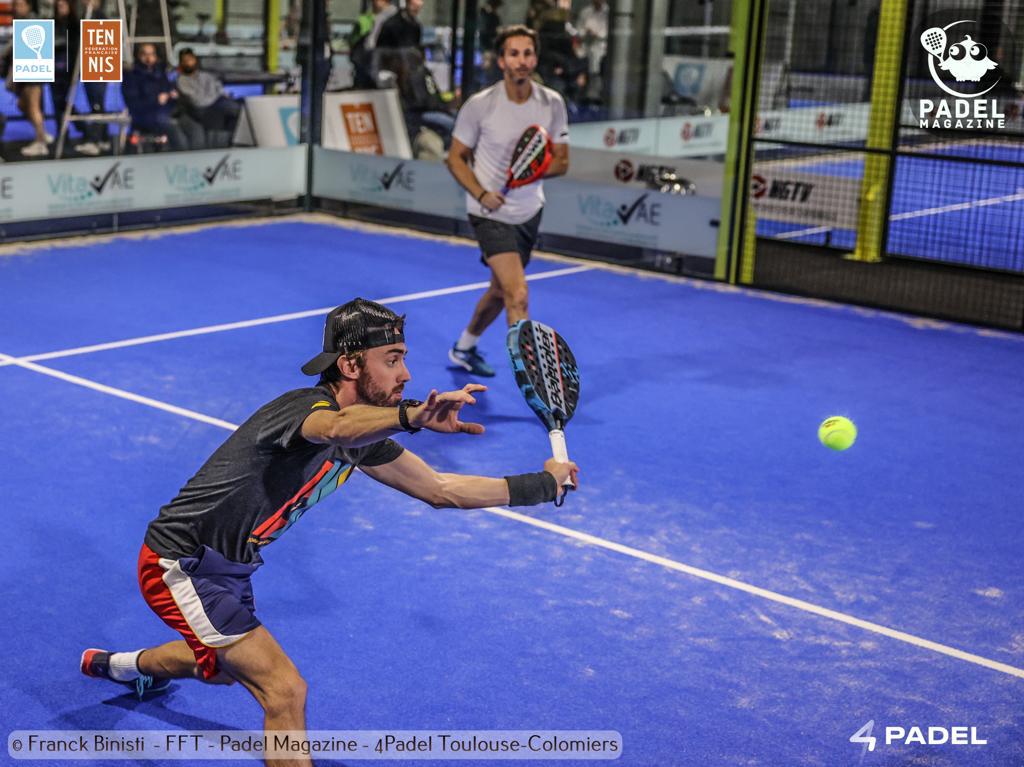












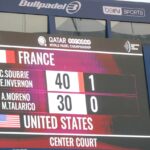


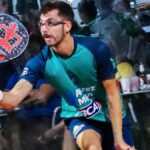

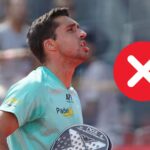














































































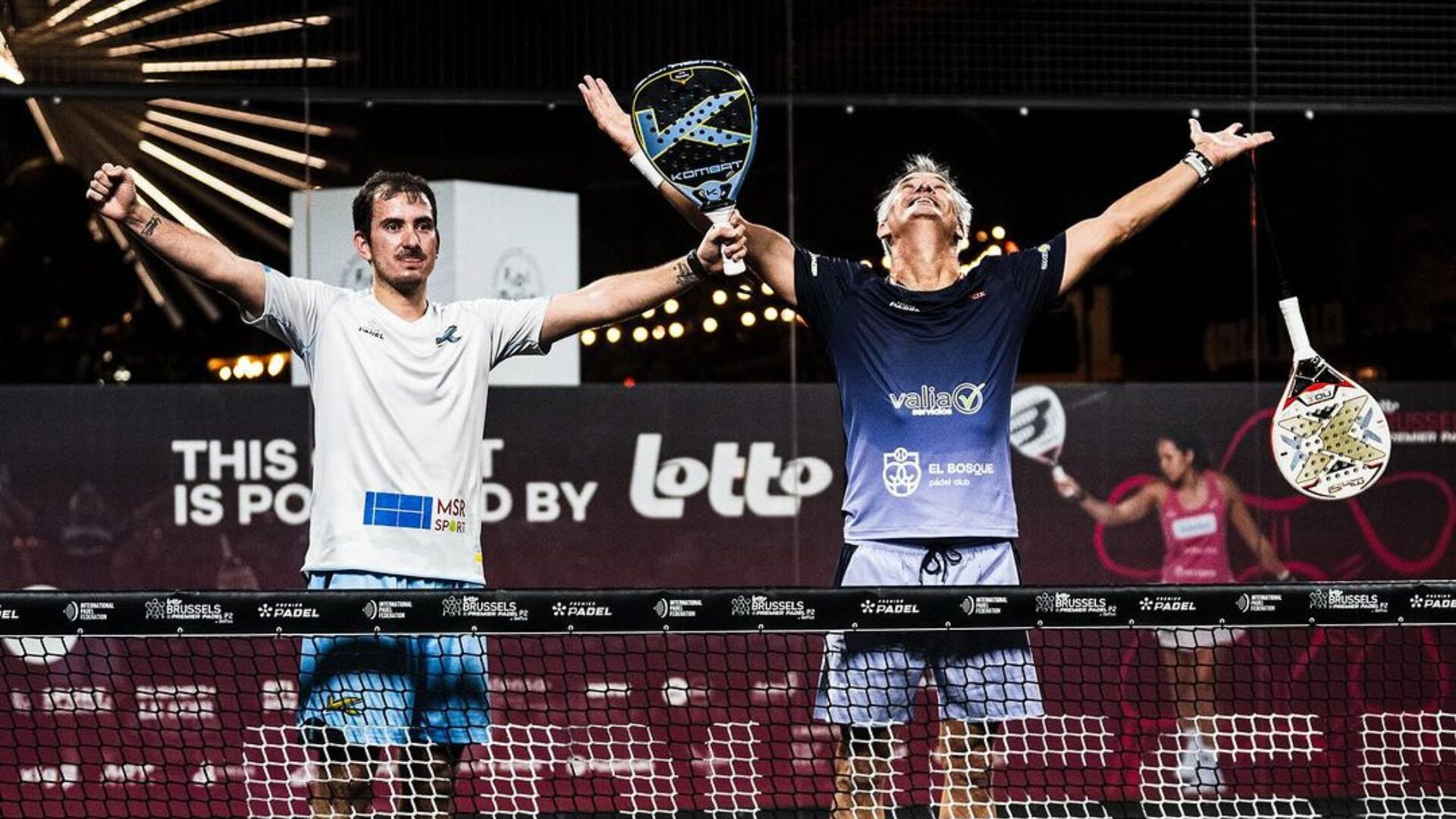 Miguel Lamperti: three tie-breaks and a return to the quarter-finals!
Miguel Lamperti: three tie-breaks and a return to the quarter-finals!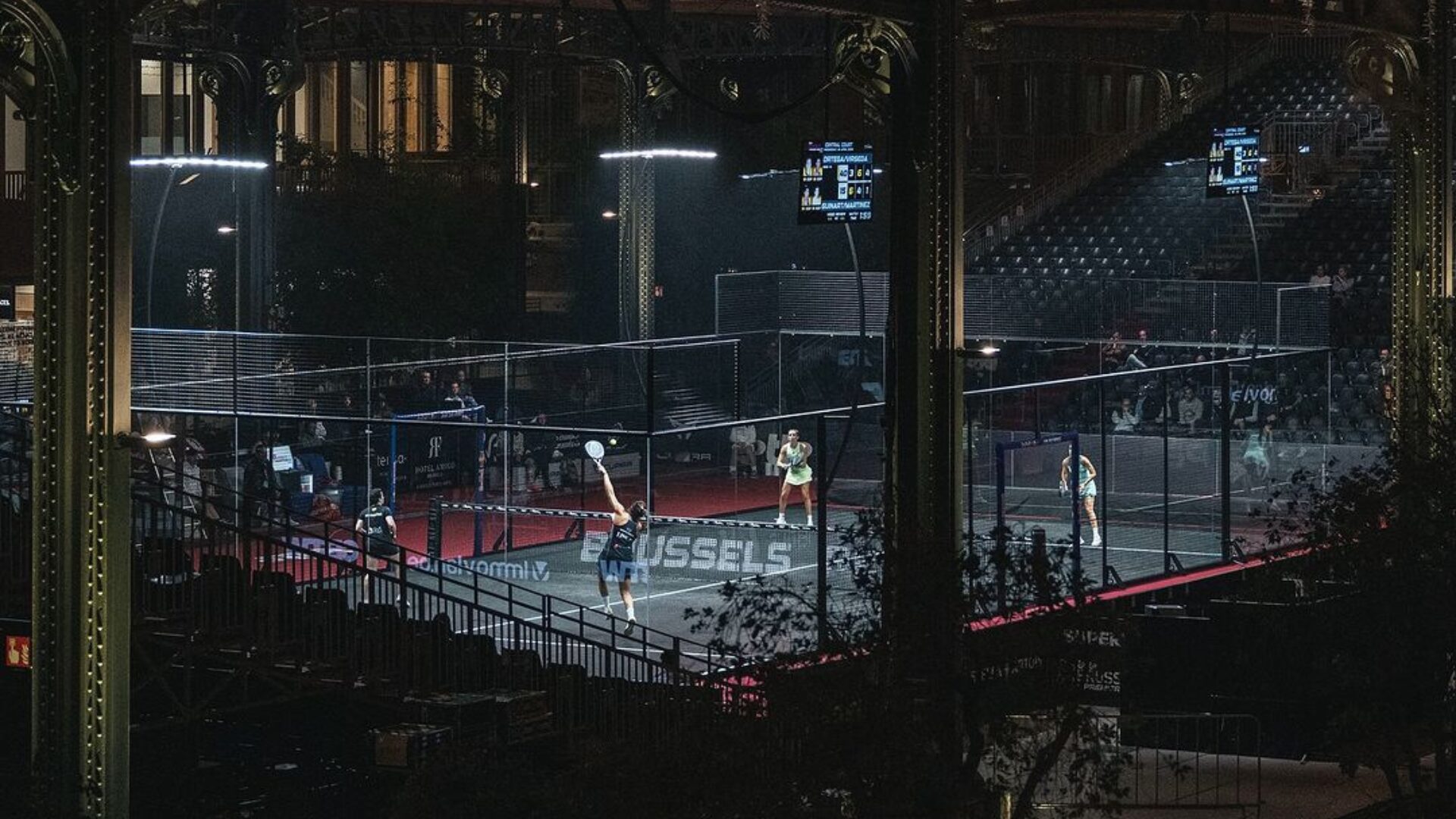 Premier Padel Brussels P2 – Place for the quarter-finals
Premier Padel Brussels P2 – Place for the quarter-finals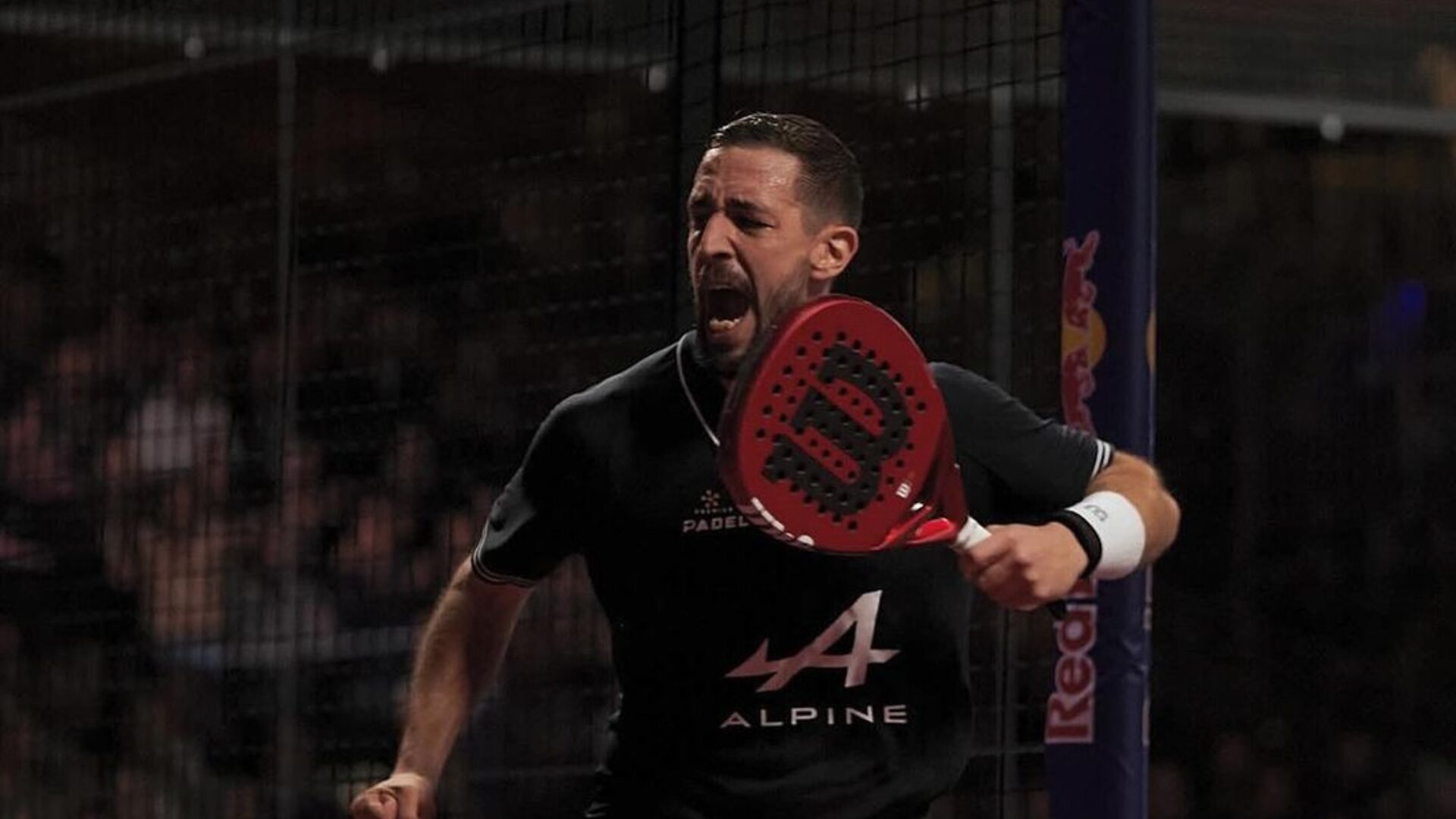 Lucho Capra: “I have fun again on the track”
Lucho Capra: “I have fun again on the track” Guillaume Codron de Sud Padel : “A family project”
Guillaume Codron de Sud Padel : “A family project” Nallé Grinda: “Democratize the padel in the USA with PadelX "
Nallé Grinda: “Democratize the padel in the USA with PadelX " Simon Boissé: “We know that there are two nations in front of us”
Simon Boissé: “We know that there are two nations in front of us” Marie Maligo: “This period of frequent changes of partners was beneficial for me”
Marie Maligo: “This period of frequent changes of partners was beneficial for me” Gilles Moretton: “We will be able to put the padel at the level of tennis”
Gilles Moretton: “We will be able to put the padel at the level of tennis”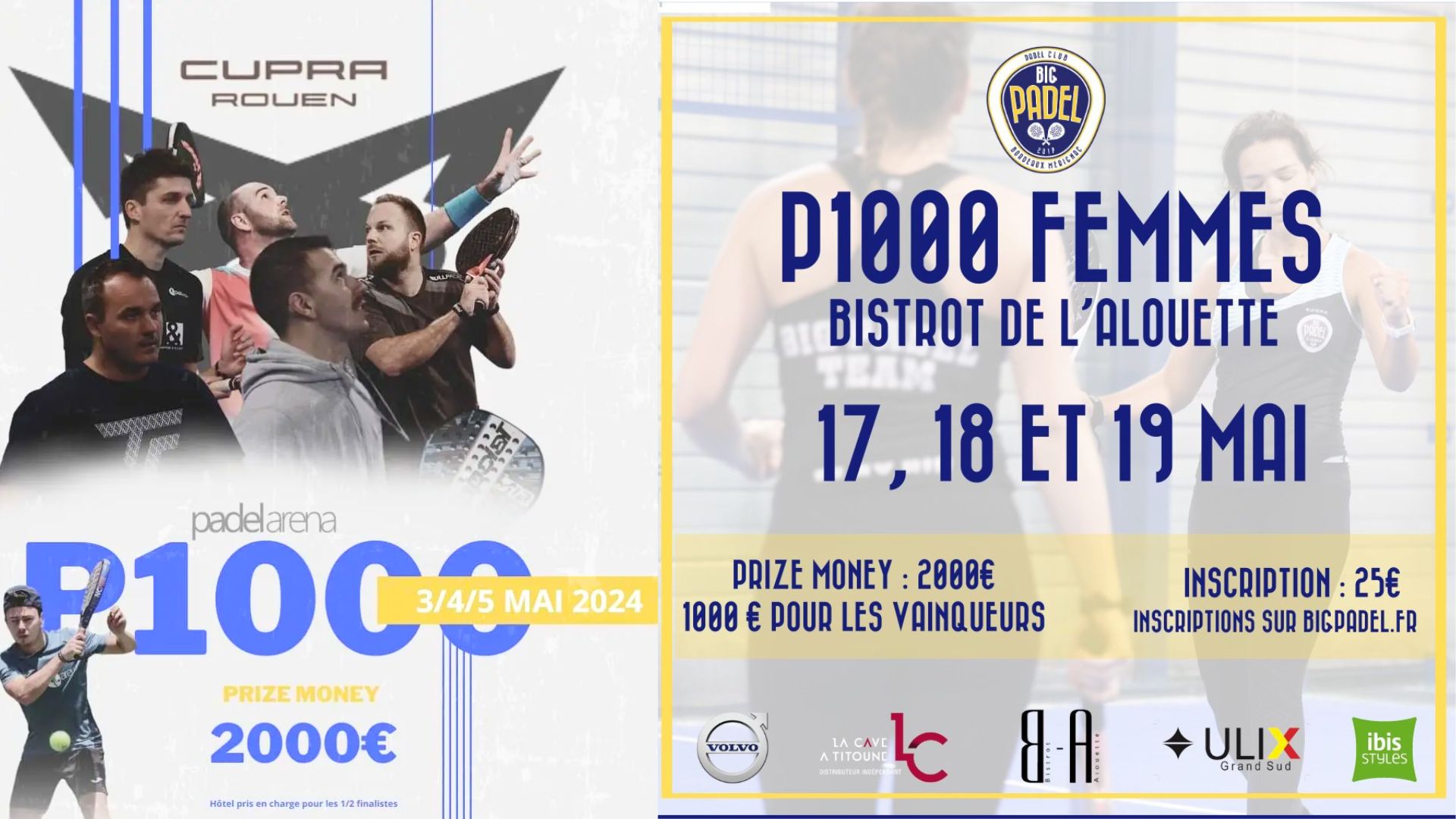 Two P1000 doubled prize money approaching!
Two P1000 doubled prize money approaching! José Manuel Escin at the inauguration of Casa Padel DOS: “Finally, and thank you!”
José Manuel Escin at the inauguration of Casa Padel DOS: “Finally, and thank you!”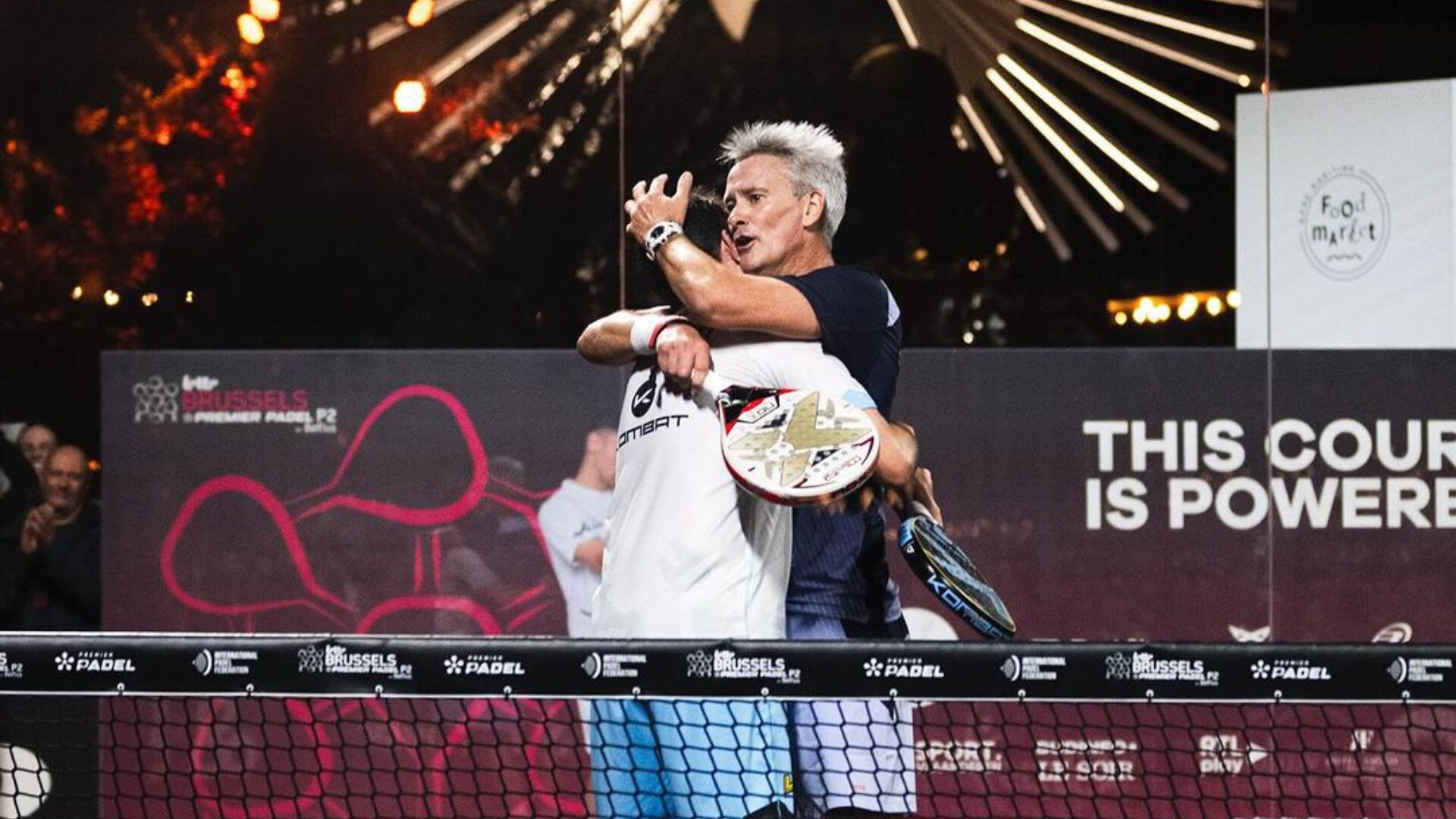 Big evening in Brussels with two seeded players on the mat, heckled number 1s…
Big evening in Brussels with two seeded players on the mat, heckled number 1s…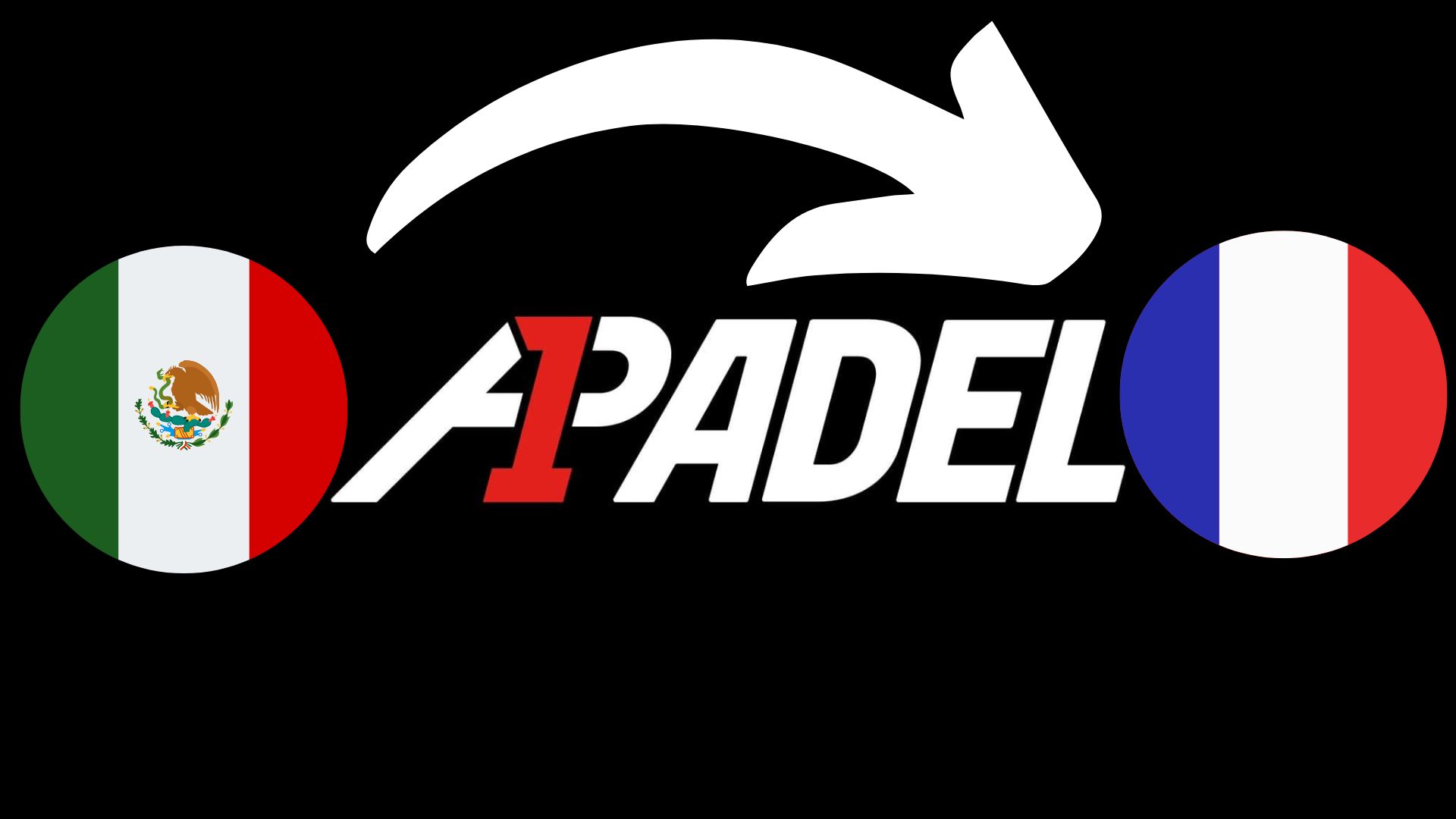 A1 Padel – the French Open replaces the Mexican Open on the calendar
A1 Padel – the French Open replaces the Mexican Open on the calendar 4 Fiberglass Padel Courts for The Ville de Paris: a choice that looks to the future
4 Fiberglass Padel Courts for The Ville de Paris: a choice that looks to the future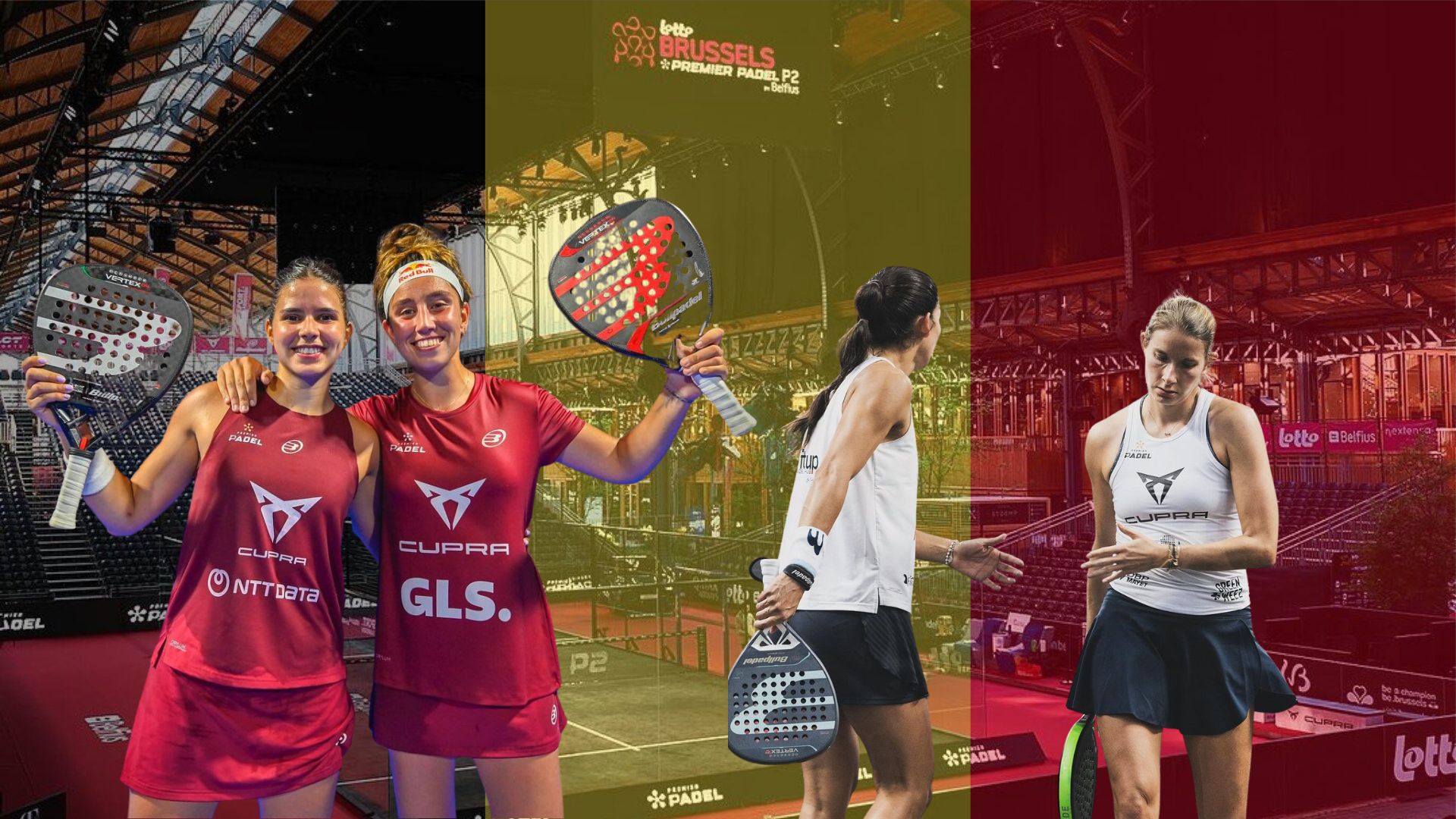 Brussels Premier Padel Brussels P2 – Collombon / Bidahorria falls against Brea / Gonzalez
Brussels Premier Padel Brussels P2 – Collombon / Bidahorria falls against Brea / Gonzalez Padel Score comes to Tahiti for American Express Padel Cup!
Padel Score comes to Tahiti for American Express Padel Cup! Do you know the Rafa Nadal Academy Tour?
Do you know the Rafa Nadal Academy Tour? Play at padel on his yacht? Possible for €233.000!
Play at padel on his yacht? Possible for €233.000! Our Top 10 training courses padel in France and Europe
Our Top 10 training courses padel in France and Europe At the heart of padel – Episode 25: Paul and Andoni answer your questions
At the heart of padel – Episode 25: Paul and Andoni answer your questions Tactical padel – What to do when faced with players who systematically stay at the bottom?
Tactical padel – What to do when faced with players who systematically stay at the bottom? The basic tactics of padel
The basic tactics of padel At the heart of padel – Episode 25: Paul and Andoni answer your questions
At the heart of padel – Episode 25: Paul and Andoni answer your questions At the heart of padel – Episode 23: defend the window well
At the heart of padel – Episode 23: defend the window well Prohibition on playing topless Padel : the reasons
Prohibition on playing topless Padel : the reasons FIP Tour – Going far from Europe, THE strategy to earn points!
FIP Tour – Going far from Europe, THE strategy to earn points! What is a good football player? padel ?
What is a good football player? padel ? “Lefties give me headaches when I play against them!”
“Lefties give me headaches when I play against them!” At the heart of padel – Episode 14: how to earn points in winter?
At the heart of padel – Episode 14: how to earn points in winter? A par 4 is always a winner...even if you manage to defend it!
A par 4 is always a winner...even if you manage to defend it! Carbon fiber VS fiberglass: what to choose?
Carbon fiber VS fiberglass: what to choose? How to effectively test a racket padel ?
How to effectively test a racket padel ? La padel to fight Parkinson's disease
La padel to fight Parkinson's disease Don't play with a cracked or broken racket, your body will thank you!
Don't play with a cracked or broken racket, your body will thank you! Michel Cymes: “The padel, physically, it’s serious!”
Michel Cymes: “The padel, physically, it’s serious!” Jeremy Gala: “Promote the padel among young people in Belgium remains a challenge”
Jeremy Gala: “Promote the padel among young people in Belgium remains a challenge” The French Touch Academy organizes its selection day Padel-Study
The French Touch Academy organizes its selection day Padel-Study Report on the detection and training of younger generations
Report on the detection and training of younger generations